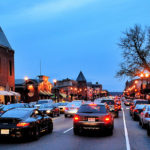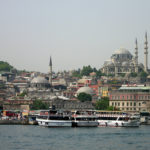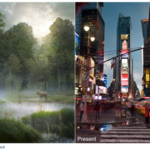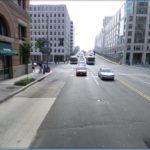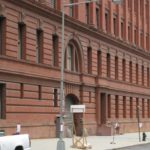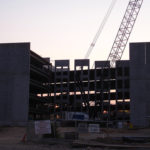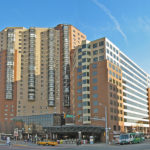Posts in the 'Urban Development' category
Is the recession putting the brakes on sustainable transportation projects? Not at colleges and universities, it seems. The 2010 College Sustainability Report Card, released earlier this month, gave 105 institutions an “A” for transportation. Only 34 schools received that grade ...

A briefing hosted by the Environmental and Energy Study Institute (EESI) yesterday delved into the transportation’s impact on carbon emissions and examined different strategies that can be incorporated into upcoming climate and transportation legislation to reduce a sector of the ...

The flows of both traffic and history move in sometimes mysterious ways. At the turn of the 21st century, cities, such as D.C., clamored to integrate the amazing new technology of automobiles. As most urban areas now choke on rapid ...

On the third day of the Clinton Global Initiative Annual Meeting, experts came together to discuss “The Infrastructure of Place: Sustainability and the Built Environment,” as moderated by Vijay Vaitheeswaran, global correspondent for The Economist and co-author of ZOOM: The ...

This morning’s plenary session on the second day of the Clinton Global Initiative was all about “Investing in Girls and Women.” Moderated by acclaimed journalist Diane Sawyer, co-anchor of Good Morning America and Primetime, the discussion agenda focused on how ...

A message from Stacey Meinzen, communications associate for EcoCity Builders, a non-profit based in Oakland, Calif. that works to build sustainable city and neighborhood centers, including pedestrian streets, car-free buildings, and rooftop gardens, while combating sprawl development: The 8th International ...

Art by Philip Straub, via National Geographic. In its latest issue, National Geographic shows what the now bustling urban jungle of Manhattan looked like before Henry Hudson spotted the island in 1609. Four hundred years ago, there were beavers, just ...

Conventional wisdom on urban history states a few things exceedingly clearly. Perhaps the most axiomatic belief about cities is that brutalist architecture is not only ugly but thoroughly destructive. Boston’s City Hall Plaza is perhaps the most loathed example in ...

Alex Block has a response up to my Gentrification’s Forgotten Block series (here, here and here) over at his very, very good blog, The City Block. It gets a lot right and a lot wrong, so I want to respond ...

Having already discussed the specific sites of the Government Printing Office and the Gales School, it’s now time to step back and look at the ecology of the entire block of G Street NW, between North Capitol and Massachusetts. Taken ...

Janette Sadik-Khan rides a bicycle to work. Photo via New York magazine. Kate Rockwood of Fast Company magazine interviewed six entrepreneurial transit experts about how to get city dwellers out of their cars for the September issue’s “Fast Talk” department. ...

In part one of my series on G Street, I discussed the Government Printing Office and the paradoxes that putting light industry in an office district creates for urbanists. In this section, I will discuss the Gales School. Again, the ...

Between North Capitol and Massachusetts Avenue, G Street NW is a block of urbanist paradox. Two sites, the Government Printing Office and the Gales School, pose difficult to answer questions about the proper place for older, grittier urban uses in ...

Over at Greater Greater Washington, David Alpert is arguing that Prince George’s County isn’t building enough transit-oriented development around its Metro stations. In his words, “Prince George’s County is completely failing to take advantage of its existing Metro infrastructure.” The ...

The Coalition for Smarter Growth is one of the preeminent activist organizations dedicated to sustainable transportation and smart land use policies in the D.C. area. Over the last ten years, the Coalition has fought for inclusionary zoning in D.C., for transit-oriented ...

Page 53 of 56« First...1020...525354...Last »








